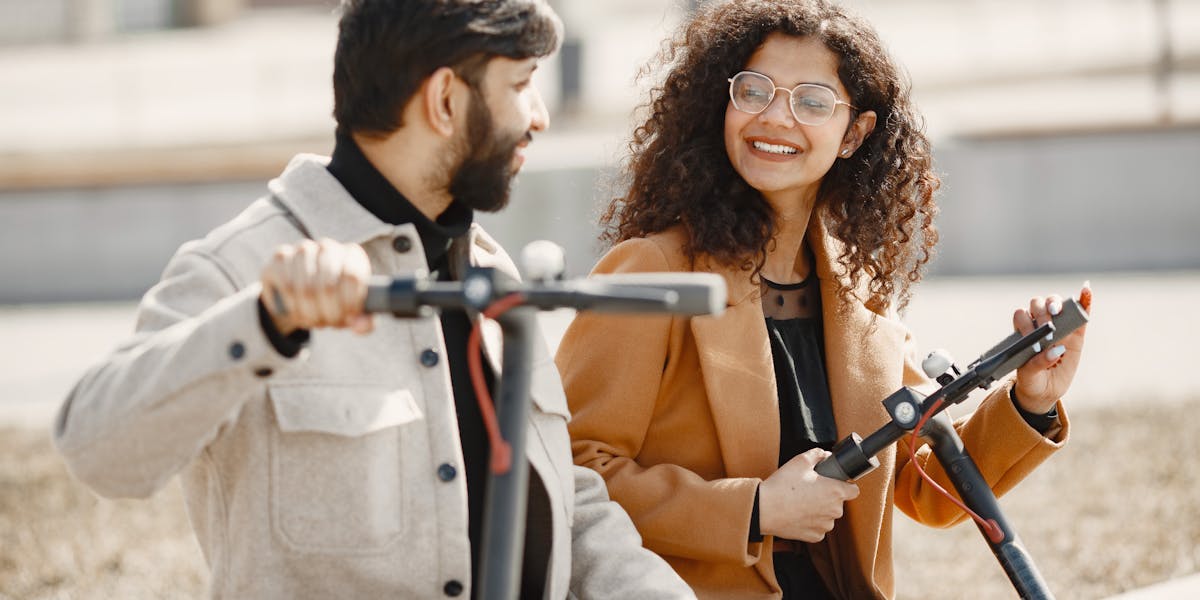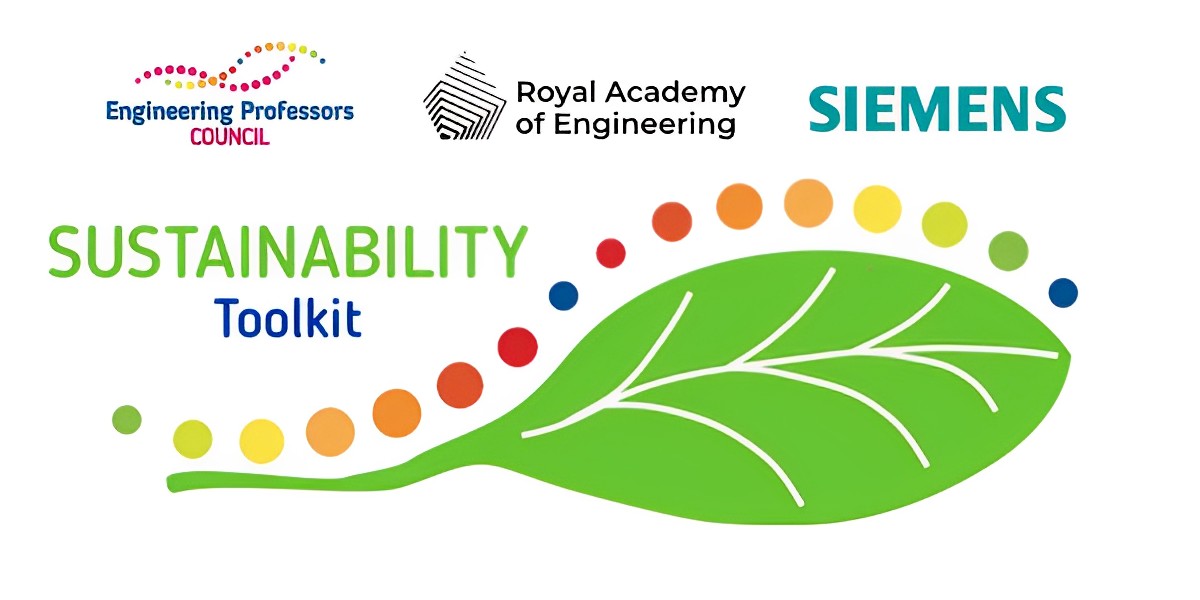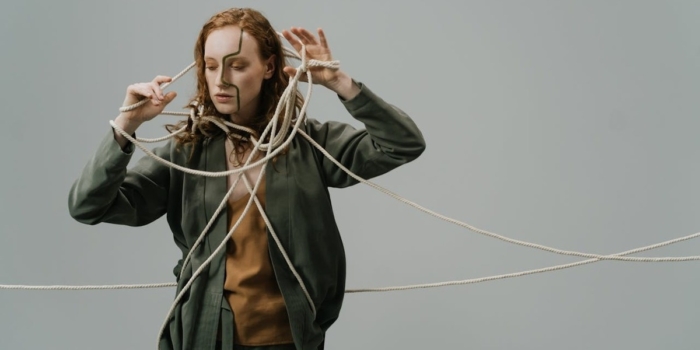Author: Aditya Johri (George Mason University).
Topic: Sustainability implications in mobility and technology development.
Type: Teaching.
Relevant disciplines: Electrical, Robotics, Civil, Mechanical, Computing.
Keywords: Design; Accessibility; Technology Policy; Electric Vehicles; Mobility, Circularity; AHEP; Sustainability; Higher education.
AHEP mapping: This resource addresses two of the themes from the UK’s Accreditation of Higher Education Programmes fourth edition (AHEP4): The Engineer and Society (acknowledging that engineering activity can have a significant societal impact) and Engineering Practice (the practical application of engineering concepts, tools and professional skills). To map this resource to AHEP outcomes specific to a programme under these themes, access AHEP 4 here and navigate to pages 30-31 and 35-37.
Related SDGs: SDG 4 (Quality education); SDG 9 (Industry, innovation, and infrastructure), SDG 12 (Responsible consumption and production); SDG 13 (Climate action).
Educational aim: The objective of this activity is to provide students with an understanding of the complexity of technology development and different considerations that need to be made by stakeholders in the design and implementation of a technology. The activity is set up as a role-play where students are assigned different roles as members of an expert panel providing feedback on the use of E-Scooters on a college campus.
Educational level: Beginner.
Learning and teaching notes:
Learners have the opportunity to:
- Consider sustainability issues related to the design and use of devices and technology.
- Discuss concerns related to safety and accessibility, that can be overlooked or not attended to when technology is developed under time pressure and when developers lack resources – human and material.
- Practice a variety of communication modes.
- Engage in research and reflection.
Teachers have the opportunity to:
- Highlight issues revealing the intricate links between digital technology and the environment.
- Demonstrate the value of perspective-taking and stakeholder engagement in technology development.
- Reveal the ethical and accessibility aspects of technology development.
- Informally evaluate critical thinking and communication skills.
Supporting resources:
Several different ethical frameworks, codes, or guidelines can be provided to students to prepare for the discussion or to reflect upon during their discussion depending on the students’ disciplinary composition. Here are a few examples:
- (Gartner TPESTRE tool) Gartner says executive leaders must act now in evaluating 7 trends for an effective strategic planning process (2021) Business Wire.
- Genovesi, S. and Mönig, J.M. (2023). Acknowledging Sustainability in the Framework of Ethical Certification for AI. Sustainability 2023, 14, 4157
Background readings and resources:
One of the goals of this exercise is to motivate students to undertake their own research on the topic to prepare for the activity. But it is important to provide them with preliminary material to start their own research. Here are a few useful resources for this case:
Readings:
- Aman, J.J., Zakhem, M. and Smith-Colin, J. (2021) ‘Towards equity in micromobility: Spatial analysis of access to bikes and scooters amongst disadvantaged populations’, Sustainability, 13(21), p. 11856.
- Delgado, C. (2023) Shared e-scooters can be sustainable-but there’s a catch, Popular Science. (Accessed: 16 February 2024).
- Hilty, L., Lohmann, W., & Huang, E. (2011). Sustainability and ICT—an overview of the field. Politeia, 27(104), 13-28.
- Iannelli , N. (2021) Upcoming DC law aims to stop electric scooters from littering sidewalks, WTOP News. (Accessed: 16 February 2024).
- Jones, N. (2018) How to stop data centres from gobbling up the world’s electricity, Nature News. (Accessed: 16 February 2024).
- Pyzyk, K (2019). Reduce, reuse, rescoot? A look at e-scooters’ long-term sustainability. Smart Cities Dive. (Accessed 16 February 2024).
- Weekend drinking a factor in many e-scooter injuries, researchers say (2021) Safety+Health RSS. (Accessed: 16 February 2024).
Videos:
- PBS Newshour (2018). Why the rise of e-scooter has been a bumpy ride. 16th November 2018. (Accessed 16 February 2024).
- Peñalosa, E. (2013) Why buses represent democracy in action, Enrique Peñalosa: Why buses represent democracy in action | TED Talk. (Accessed: 16 February 2024).
- Schmidt, G. (2014) The emergent patterns of Climate Change, Gavin Schmidt: The emergent patterns of climate change | TED Talk. Accessed: 16 February 2024).
- McCormick, G. (2021) Tracking the whole world’s carbon emissions — with satellites and AI, Gavin McCormick: Tracking the whole world’s carbon emissions — with satellites and AI| TED Talk. (Accessed: 16 February 2024).
- Sze, V. (2019) Energy-efficient AI, Vivienne Sze: Energy-Efficient AI | TED Talk. Available at: (Accessed: 16 February 2024).
Role-play instructions:
- Each student is assigned a role a week before the discussion.
- Students assigned to the role of Eva Walker serve as the moderator and lead the conversation based on the script below.
- The script provided below is there to guide the discussion, but you should leave room for the conversation to flow naturally and allow everyone to contribute.
One way to ensure students are prepared for the discussion is to assign a few questions from the script as a pre-discussion assignment (short answers). Similarly, to ensure students reflect on the discussion, they can be assigned the last question from the script as a post-discussion exercise. They can also be asked specifically about frameworks and concepts related to sustainability.
Role-play scenario narrative and description of roles:
Eva Walker recently started reporting about on-campus traffic issues for the student newspaper. She would have preferred to do more human-interest stories, but as a new member of the staff who had just moved from intern to full-time, she was happy to get whatever opportunity she could. Eva was studying both journalism and creative writing, and this was her dream on-campus job. She also realised that, even though many stories at first didn’t appear to her as though she would be interested in them, as she dug deeper she eventually found an angle with which she could strongly relate.
One weekday morning, Eva was working on yet another story on parking woes when Amina Ali, one of the editorial staff members, texted her to say that there had been an accident on campus; she just passed it at the intersection of the library and the recreation building, and it might be worth covering. Eva was at the library, and within no time, reached the spot of the accident.
When Eva arrived, a police vehicle, an ambulance, and a fire engine were all present at the scene, and near the accident site, an e-scooter lay smashed into a tree. It looked like the rider was sitting in the ambulance and was being treated by the medical staff. A little further away, Eva noticed the police speaking to a young woman in a wheelchair. Although Eva’s first instinct was to try to talk to the police or the medical staff to ascertain what had happened, she realised this probably wasn’t the best moment and she would have to wait until later for the official version of the event.
She looked around and saw a group of four students leaning against a wall with drinks in their hands. A couple of them were vaping. Eva thought that they looked like they had been here for a while, and she walked over to ask them what had happened. From the account they gave her, it appeared as if the e-scooter rider was coming around the bend at some speed, saw the woman in the wheelchair a little too late to ride past her, and, to avoid hitting her, leapt off his e-scooter and let the vehicle hit the tree. Things happened very quickly and no one was exactly sure about the sequence of events, but this was the rough story she got.
Later, she called the police department on campus and was able to speak with one of the officers to get an official account. The story was very similar to what she already knew. She did find out that nobody was seriously hurt and that the only injuries were to the e-scooter rider and were taken care of at the scene by the medical staff. When she asked about who was to blame or if any legal action was expected, she was told that there were no laws around the use of helmets or speeding for e-scooters yet and that she should reach out later for more information. Eva wrote up what she had so far, sent it over to the editorial staff, and considered her work done.
But as she was walking back to her halls of residence that evening, her attention was drawn to the large number of e-scooters parked near the library. As she crossed the central campus, she noticed even more e-scooters lying about the intersections, and there was a litter of them around the residence hall. She wondered why she hadn’t noticed them before. Her attention was drawn today, she thought, because of the accident and also because she saw a good Samaritan remove an e-scooter from the sidewalk, as it was blocking the path of one of the self-driving food delivery robots. It’s a sign, Eva thought, this is what she needs to look for more in her next article, the use of e-scooters on campus.
Eva recognised that, to write a balanced and informative article, as she had been taught to do, she would have to look at many different aspects of the use of e-scooters as well as look broadly at mobility on campus and the use of battery powered vehicles. She had also recently seen e-bikes on campus and, in addition to the food delivery robots, service robots in one of the buildings that she assumed was either delivering paperwork or mail. The accident had also made her realise that, when it came to mobility, accessibility was something that never crossed her mind but that she now understood was an important consideration. She hoped to learn more about it as her research progressed.
As background research for the article, Eva started reading up on articles and studies published about e-scooters, e-bikes, and urban mobility and came across a range of concerns that had been raised beyond accessibility. First, there were reports that e-scooters are not as environmentally friendly as many service providers had made them out to be. This is related to the production of the battery as well as the short lifespan of the vehicles, and as of yet, there has been no procedure implemented to reuse them (Pyzyk, 2019). Second, there were reports of littering, where e-scooters are often left on sidewalks and other places where they restrict movement of other vehicles, pedestrians, and in particular, those in wheelchairs (Iannelli, 2021). Finally, it was also clear from the reports that accidents and injuries have increased due to e-scooters, especially since many riders do not wear safety gear and are often careless, even inebriated, as there were little to no regulations (2021). When she approached her editor with an outline for an article, she was advised to do some more reporting by talking with people who could shed more light on the issue.
After some research, Eva shortlisted the following experts across fields related to e-scooters for an interview, and once she spoke with them, she realised that it would help her if she could get them to have a dialogue and respond to some of the questions that were raised by other experts. Therefore, she decided to conduct a focus group with them so that she achieved her goal of a balanced article and did not misrepresent any expert’s point of view.
Experts/roles for discussion:
1. Bryan Avery is co-founder and chief technology officer (CTO) of RideBy, an e-scooter company. RideBy is one of the options available on campus. Born in a small town, Bryan used to ride his bicycle everywhere while growing up, and for him, founding and leading an e-scooter company provided a chance to merge his interests in personal transportation and new forms of energy. He was a chemical engineer by training, and at a time when most of his friends ended up working for big oil companies, Bryan decided to work on alternative fuels and found himself developing expertise and experience with batteries. For most of the software- and mobile device-related development, RideBy outsourced the work and utilised ready-to-configure systems that were available. By only keeping the core device and battery functionality in-house, they could focus on delivering a much stronger product. Overall, he is quite happy with the success of RideBy so far and can’t help but extol the difference it can make for the environment.
2. Abiola Abrams is a professor of transportation engineering and an expert on mobility systems. Her work combines systems engineering, computer science, and data analytics. Her recent research is on urban mobility and micro-mobility services, particularly e-bikes. In her research, Dr. Abrams has looked at a host of topics related to e-bikes, many of which are also applicable to e-scooters, including the optimisation of hubs for availability, common path patterns of users, subscription use models, and the e-waste and end of lifecycle for these vehicles. Increasingly, she has become concerned about the abuse of some of these services, especially in cities that attract a lot of tourists, and about the rough use of the vehicles, so much so that many do not even last for a month. In a new project, she is investigating the effect of e-vehicles on the environment and has found that there is mixed evidence for how much difference battery-operated vehicles will actually make for climate change compared to vehicles that use fossil fuels.
3. Marco Rodrigues works as transportation director for the local county government where the university is based. As part of a recent bilateral international exchange, he got the opportunity to spend time in different cities in Germany to learn about local transportation. He realised very quickly that local transportation was very different in Germany; residents had a range of public, shared options that were missing in the United States. However, he also realised that e-mobility services were being considered across both countries. He investigated this further and found that Germany waited until it could pass some regulations before allowing e-mobility operators to offer services; helmets were mandatory on e-scooters and e-bikes, and riders had to purchase a nominal insurance policy. He also learned that there were strict rules around the sharing of data generated by the vehicles as well as the apps used by riders.
4. Judy Whitehouse is director of infrastructure and sustainability on campus and responsible for planning the long-term development of the campus from a space perspective, but also increasingly from a sustainability dimension. As the number of students has increased, so has the need for more infrastructure, including classrooms and halls of residence. This has also resulted in greater distances to be traveled on campus. Judy regards e-mobility options as a necessary component of campus life and has been a strong supporter for them. Lately, she has been called into meetings with safety and emergency management people discussing the issue of increased accidents on campus and the littering of e-vehicles across the campus. Not only is it bad for living on campus, but it is also bad for optics. A recent photo featured in the campus newspaper was a stark reminder of just how bad it can look. She is further divided on the use of e-scooters due to misgivings about the sustainability of battery use, as new research suggests that manufacturing batteries and disposing them are extremely harmful for the environment.
5. Aaron Schneider heads Campus Mobility, a student interest group focused on autonomous vehicles development and use. The group members come from different degree programmes and are interested in both the technical dimensions of mobile solutions and the policy issues surrounding their implementation. Aaron himself is a computer science student with interests in data science, and with some of his fellow members from the policy school, he has been analysing a range of mobility-related datasets that are publicly available online. Of these, the data on accidents is quite glaring, as the number of accidents in which e-scooters are involved has gone up significantly. Aaron and his friends were intrigued by their findings and approached some of the companies to see if they would share data, but they were disappointed when they could not get access. Although the companies said it was due to privacy reasons, Aaron was not too convinced by that argument. He was also denied access to any internal reports about usage patterns of accidents. Ideally, he would have liked to know what algorithms were used for optimising delivery and access, but he knew he was not going to get that information.
6. Sarah Johnson is the head of accessibility services on campus and is responsible for both technology- and infrastructure-related support for students, faculty, and staff. The growth of the physical campus and the range of technological offerings has significantly increased the workload for her office, and they are really strained in terms of people and expertise. The emphasis from the university leadership is largely on web and IT accessibility, as teaching and other services are shifting quickly online, but Sarah realises that there is still an acute need to provide physical and mobility support to many members of the community. Although all the new buildings are up to code in terms of accessibility, there is still work to be done both for the older buildings and especially for mobility. Campus beautification does not always go along with access. She is also worried about access to devices, as taking part in any campus activity requires not just a computer, but also access to mobile devices that are out of reach economically for many and not easy to use.
Role-play script:
To help get the dialogues started and based on her prior conversation with the group, Eva has prepared some initial questions:
- What role are you playing and, from your perspective, what do you see as the biggest pros of using e-vehicles, especially e-scooters on campus?
- From your perspective, what do you see as the biggest downside of using e-vehicles, especially e-scooters on campus?
- Can you confidently say that e-scooters are an environmentally friendly option?
- What current accessibility accommodations would be impacted by the use of e-vehicles, and what new, potential accessibility accommodations might arise from increased use of e-vehicles?
- Would we be better off waiting for more regulations to come before deploying these vehicles on campus and, if so, what should those regulations look like?
- Should we use automatic regulation of speed on the vehicle based on where it is and/or inform authorities if it is violated?
- Can we control where it can go or penalise if not put back?
- What guidelines do you recommend for e-scooter usage on campus?
Authorship and project information and acknowledgements: The scenarios and roles were conceptualised and written by Aditya Johri. Feedback was provided by Ashish Hingle, Huzefa Rangwala, and Alex Monea, who also collaborated on initial implementation and empirical research. This work is partly supported by U.S. National Science Foundation Awards# 1937950, 2335636, 1954556; USDA/NIFA Award# 2021-67021-35329. Any opinions, findings, and conclusions or recommendations expressed in this material are those of the authors and do not necessarily reflect the views of the funding agencies. The research study associated with the project was approved by the Institutional Review Board at George Mason University.
This work is licensed under a Creative Commons Attribution-ShareAlike 4.0 International License.
Any views, thoughts, and opinions expressed herein are solely that of the author(s) and do not necessarily reflect the views, opinions, policies, or position of the Engineering Professors’ Council or the Toolkit sponsors and supporters.
To view a plain text version of this resource, click here to download the PDF.





